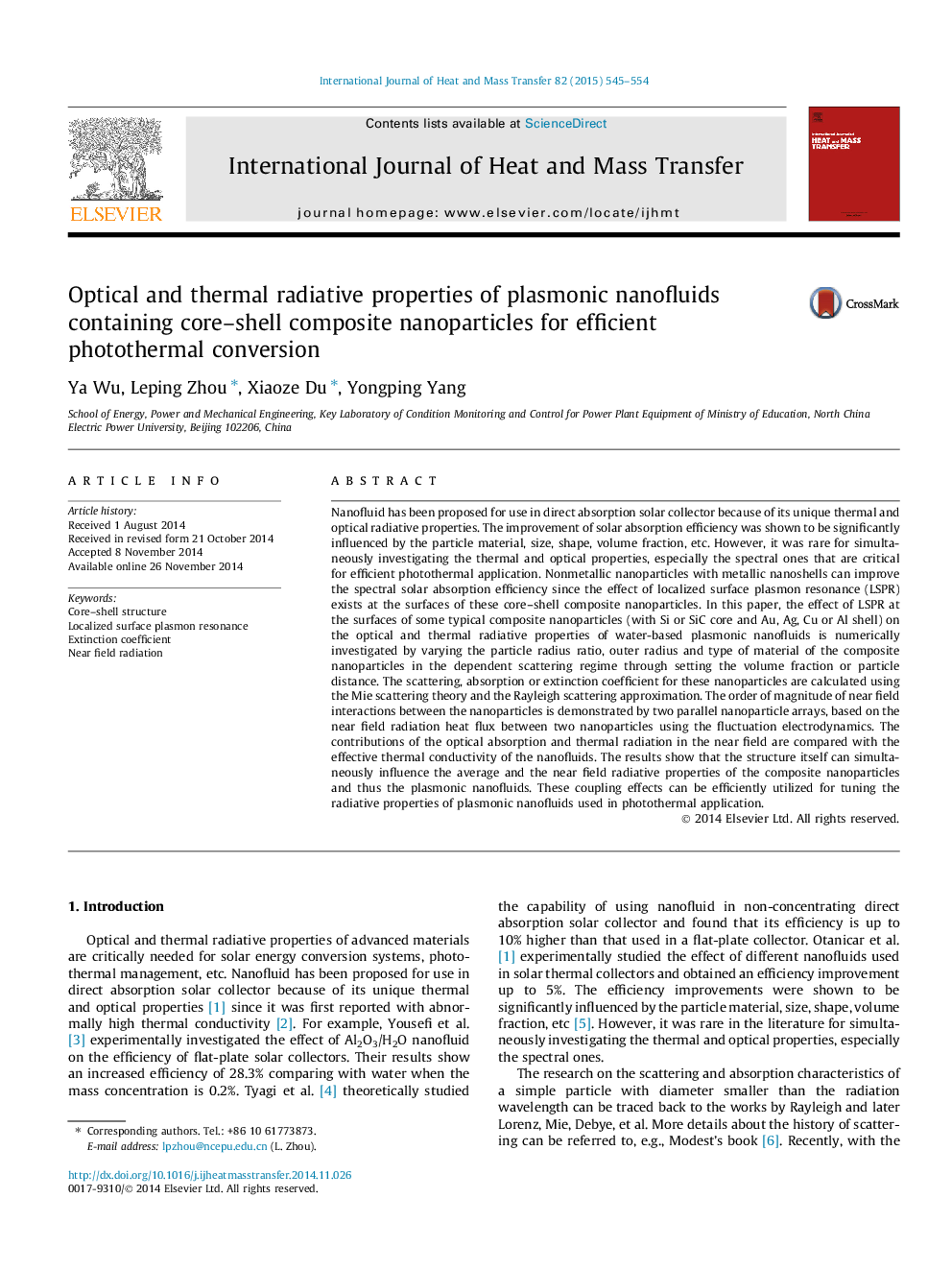| Article ID | Journal | Published Year | Pages | File Type |
|---|---|---|---|---|
| 657372 | International Journal of Heat and Mass Transfer | 2015 | 10 Pages |
Abstract
Nanofluid has been proposed for use in direct absorption solar collector because of its unique thermal and optical radiative properties. The improvement of solar absorption efficiency was shown to be significantly influenced by the particle material, size, shape, volume fraction, etc. However, it was rare for simultaneously investigating the thermal and optical properties, especially the spectral ones that are critical for efficient photothermal application. Nonmetallic nanoparticles with metallic nanoshells can improve the spectral solar absorption efficiency since the effect of localized surface plasmon resonance (LSPR) exists at the surfaces of these core-shell composite nanoparticles. In this paper, the effect of LSPR at the surfaces of some typical composite nanoparticles (with Si or SiC core and Au, Ag, Cu or Al shell) on the optical and thermal radiative properties of water-based plasmonic nanofluids is numerically investigated by varying the particle radius ratio, outer radius and type of material of the composite nanoparticles in the dependent scattering regime through setting the volume fraction or particle distance. The scattering, absorption or extinction coefficient for these nanoparticles are calculated using the Mie scattering theory and the Rayleigh scattering approximation. The order of magnitude of near field interactions between the nanoparticles is demonstrated by two parallel nanoparticle arrays, based on the near field radiation heat flux between two nanoparticles using the fluctuation electrodynamics. The contributions of the optical absorption and thermal radiation in the near field are compared with the effective thermal conductivity of the nanofluids. The results show that the structure itself can simultaneously influence the average and the near field radiative properties of the composite nanoparticles and thus the plasmonic nanofluids. These coupling effects can be efficiently utilized for tuning the radiative properties of plasmonic nanofluids used in photothermal application.
Related Topics
Physical Sciences and Engineering
Chemical Engineering
Fluid Flow and Transfer Processes
Authors
Ya Wu, Leping Zhou, Xiaoze Du, Yongping Yang,
